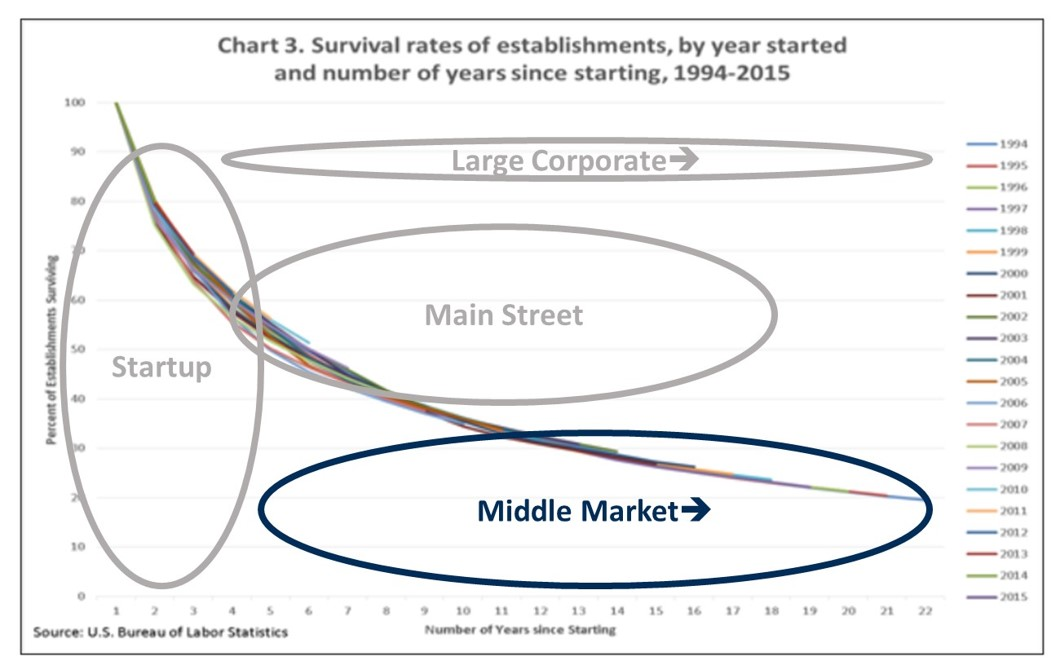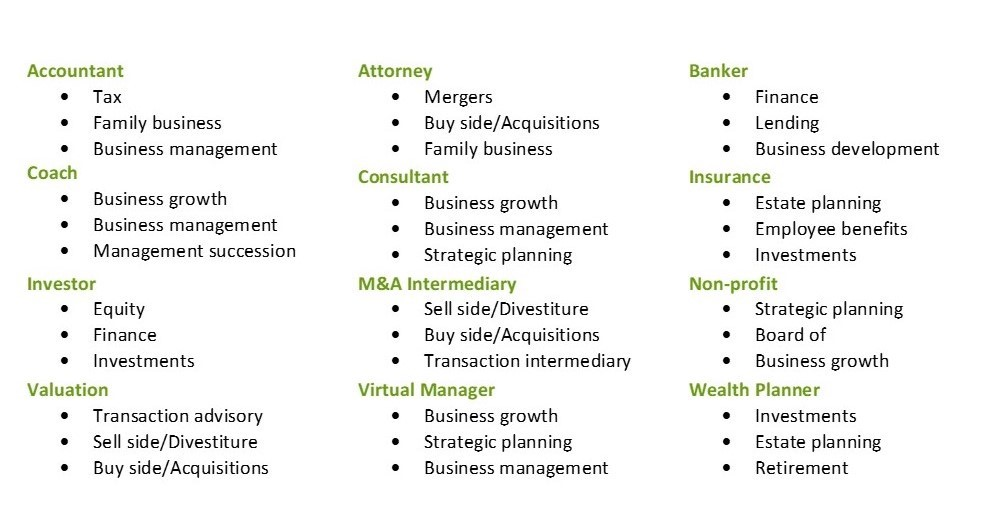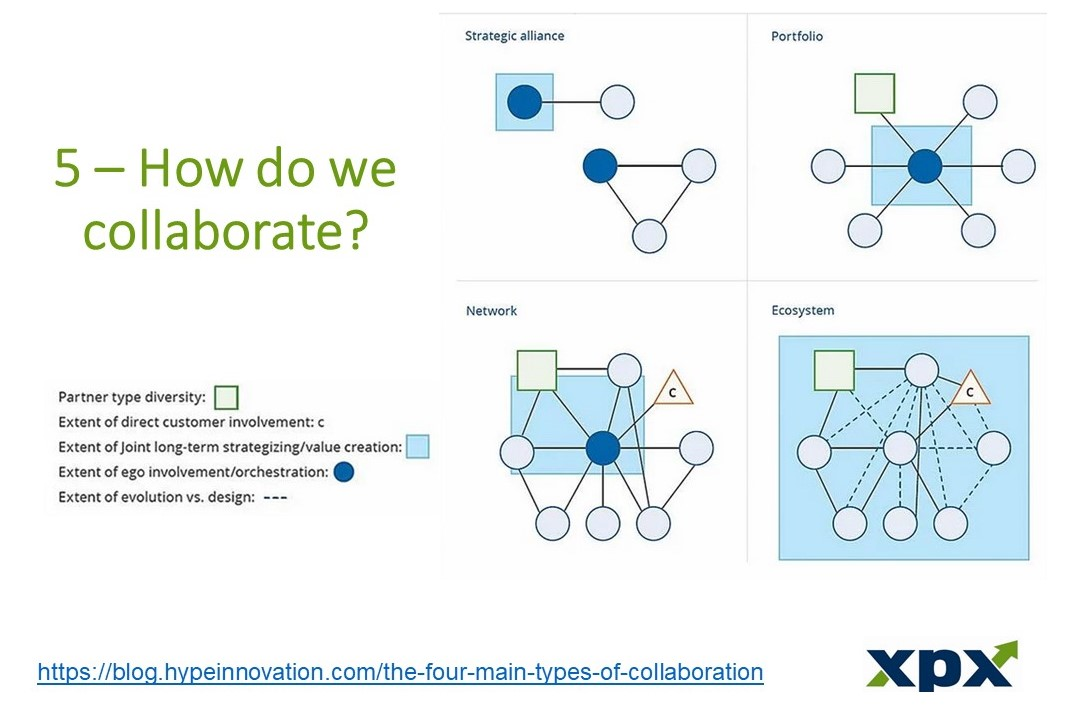Our first principle at XPX is to “work collaboratively.” We talk about it as if it’s obvious, but it is a fundamental challenge that we all face in our work.
During this webinar with our members, we discussed different types of collaboration, best practices for building a collaborative network, and ways to overcome the associated challenges. We will share our members’ comments with you and you’ll learn:
- What is collaboration?
- Where do we focus and why?
- Why is collaboration important?
- Who are the players?
- How do we collaborate?
- When/how to formalize?
- What are the challenges?
What is Collaboration?
There is an excellent definition of collaboration from the BusinessDictionary:
General: Cooperative arrangement in which two or more parties (which may or may not have any previous relationship) work jointly towards a common goal.
Knowledge management (KM): Effective method of transferring ‘know how’ among individuals, therefore critical to creating and sustaining a competitive advantage.
Negotiations: Conflict resolution strategy that uses both assertiveness and cooperation to seek solutions advantageous to all parties. It succeeds usually where the participants’ goals are compatible, and the interaction among them is important in attaining those goals.
Where Do We Focus Our Collaboration?
At XPX, we believe that there is a critical need to support the growth of healthy, vibrant ecosystems in the lower middle market of local economies. Doing this is impossible without collaboration.
The data on corporate survival rates from the US Bureau of Labor Statistics between 1994-2015 shows that consistently, 50% of business don’t make it past five years, and only 20% of businesses make it by 20 years.
The companies in the LMM are past that five-year start-up stage and have joined the 50% of businesses that have made it, but that’s not a guarantee that they will succeed long-term. There are many challenges associated with becoming a long-lasting, sustainable business with transferrable value. As they are scaling and growing, they often lack internal resources to support that growth. That’s where we come in.
These lower middle market companies tend to make heavy use of external advisors to fill the gaps and get the expertise they need. But for it to be successful, everyone on the team needs to collaborate and pull in the right direction.

Why is Collaboration Important?
At XPX, we believe that the secondary effects of supporting the LMM businesses are invaluable. The ripples that go out from a thriving local business drive sustainable and reliable sources of local employment. Many of our clients are essential contributors to their communities. Maintaining their businesses and making them viable over many years and different generations of owners is critical to helping maintain the local economy.
The regional XPX chapters facilitate deep networks of advisors to help the LMM businesses and business owners realize the value of the work that they’ve put in. XPX members collaborate by sharing resources, pursuing similar principles, building relationships and then bring it all to their clients with a high level of professionalism.
Who Are The Players In LMM Collaboration?
This graph shows the 12 professions in the XPX ecosystem, and the top three areas of expertise within these professions. Our members tend to have seven to ten areas of expertise each, so you can see how quickly it develops into a diverse network and why collaboration becomes a critical element of helping them succeed.
Business advisers are generally talking to someone in the C-Suite, but they are not all necessarily to each other. At XPX, we foster relationships between advisors and encourage them to have informal communication to ensure that everyone is on the same page and doing what’s best for the company. Such collaboration can also save the company money.


How Do We Collaborate?
While looking into different methods of collaboration, we came across a thought-provoking article from the Hype Innovation blog, titled “The Four Main Types of Business Collaboration,” written by Oana-Maria Pop. The article talks about four types of collaboration and how collaboration has evolved over the years.
- Strategic Alliances: The original form of collaboration; when two or more business formally agree to collaborate on a temporary basis to achieve their strategic goals.
- Portfolios: To extend the benefits and the duration of strategic alliances, companies began to build portfolios that allowed them to centrally manage multiple alliances and create cross-fertilization of knowledge. The pharmaceutical industry popularized the portfolio collaboration.
- Networks: Portfolios and alliances evolved into a more complex system of networks that connect companies with similar R&D goals. Networks increase the ability of all parties to collaborate and contribute to the common goal, including the customer, while reducing competition within the network. There is less focus on managing individual collaborations and more focus on the company’s position in the network, eventually leading to competition between the networks. Networks still have a central authority, though some of the parties can communicate with each other directly, unlike in the portfolio system.
- Ecosystems: The most advanced form of collaboration, ecosystems are generally self-contained and self-adjusting systems. They are built on strong interdependency, integration, shared and complementary skills and objectives. All parties can communicate with each other, including the customer, and there is no need to go through a central manager, as there is no formal authority in the ecosystem: “innovation is no longer in service of the focal firm. Innovation is now a jointly orchestrated activity.”
The article concludes that ecosystems are becoming the go-to practice for collaboration as they lead to the most effective problem-solving. While the ecosystem structure is what we strive for at XPX as well, it’s important to note that most collaboration systems in the lower middle market companies are not being created de novo.
Every business that we consult for already has an existing structure in place that has worked on some level. It’s rare to come in and throw everybody out and start anew. But the system will inevitably have gaps and that’s where we come in as advisors.


When To Formalize Collaboration?
Another factor of collaboration is how and when to formalize the collaboration network. The same article from Hype Innovation has this great quote:
“While a generally accepted definition of ecosystems is lacking, scholars like Ron Adner have underlined a few key characteristics. In his view, ecosystems have a long-term orientation, are partly self-adjusting and make complex interdependencies between various types of partners, including end customers, explicit.”
It’s the essence of what we try to do at XPX; our view is that collaboration is a long and never-ending journey. One of our principles as an organization is to be partly self-adjusting. Our members tend to collaborate informally, assembling or recommending the right team with the best skills for each client’s needs.
There are benefits to both staying fluid and deciding to make complex interdependencies explicit and formalizing them. The important thing is to do what is most helpful for the company long-term.
Whose Responsibility is Collaboration?
In most cases, the business owner or the CEO (a member of the C-Suite) is at the center of the network and sets the tone for collaboration. Sometimes, they want to have a relationship with one coach or a trusted advisor who can coordinate and collaborate on their behalf.
One of XPX members, Gary, shared that:
“there is almost a need to be a first mate, who can take the captain’s orders and implement things that he/she doesn’t have the time, desire, or expertise to do. I think it comes down to, who is the most trusted advisor for that particular business owner? Then, it’s up to him/her to bring in the professional resources, collaborate, and bring in the intellectual muscle to help solve the client’s problems at the right time and in the right sequence.”
Does There Need To Be a Point Person in Collaboration?
Gary:
“The problem with not having a point person is you’re not saving the CEO any time, and time is the ultimate constraint. Once the business owners have educated their trusted advisor on where they want to go, what their goals and needs are, then they don’t have the time to go through that again with five, ten other people and coordinate all the separate groups. I think a coach or a trusted advisor brings the most value for the client. You need to have a coach handle that for you if you’re busy running a business.”
XPX member David had a slightly different take on it. When he starts working with the client, he plays the lead role, bringing others in, but he is not the only one talking to the client. He pulls the team together at the outset, even if they don’t all start the work immediately.
“It takes care of that one problem of the owner having to repeat things over and over again. It’s a very quick level-setter. If I’ve already done that debrief download, I can take care of that debrief with subsequent people who may come and join the team to do different things.”
He Added:
“I think it’s the intentional laying out of how the team is going to work together, and then some of it is educating the business owner that it’s in their best interest to have a team.”
The Role of Ego
We find that one of the more significant challenges in successful collaboration is overcoming ego. As illustrated in the Hype Innovation article, as the collaboration systems evolve, the role of ego plays a lesser and lesser role.
If you look at their graphic, there is a dark blue dot labeled “Ego” in the alliance, portfolio and network collaboration systems, but it’s absent in the ecosystem. Since there is no central managing authority in this more complex model, the ego is stripped away.
The hardest part of collaboration is moving beyond our egos and our individual views to come up with a collective solution.
David:
“Just because you’re the attorney, or the CPA, or whatever role, doesn’t mean that somebody who’s not in that profession, who’s got 30 years of experience, can’t have some good ideas to mix into whatever the topic of discussion is. Minimizing your ego to be open to listening to the rest of the team is where you get that perfect– the much better-blended advice to the client.”
The Importance of Trust
In all forms of collaboration, communication and trust are key. Trust is generally the product of time and repeated interaction, but the interaction needs to be substantial and allow you to get to know people on a deeper level. This type of trust between advisors is the unspoken goal at XPX.
David:
“The only time that you’re going to know if you can really work with another advisor is when you get to know them, you talk a lot and have that first project together. That’s when you’ll know if you can collaborate with them. Then the client’s going to get the best advice. It’s also going to be less expensive, and in the long run, build more value. If there’s really a coherent team that are comfortable working with each other, not territorial trusting.”
XPX Member Orlando:
“The level of integrity, level of competence, and motivation, those are the three major areas (for trust), if they’re not aligned, then there’s a lot of fear to bring someone in who might tilt everything off in the wrong direction…how do you facilitate each of the member to get on that level of trust on these three things?”
How To Build Trust?
The question that our members often struggle with is: how do you accelerate your interaction with people to get to that necessary level of trust? It can be challenging to determine if someone is a good fit for you to collaborate with just based on their resume, if you haven’t worked with them before.
Orlando:
“Our educational approach at XPX is great. You can put someone else’s competence on display, but you don’t always hear their motivation or their integrity necessarily, and it takes a long time to build that level of trust with each other and to know whether they’re really on that level.”
XPX Member Carla: asked an important question:
“We are all in these groups because we are members, but then once you get past ‘what do you do, how do you do it for your clients,’ the basic organic networking discussions with your relationship building, are there other things we could do?”
So how do you build trust before you get to work with someone? Here are a couple of suggestions that we have had success with:
- You should have stories ready to share and you should ask others to share their stories. The closest you can get to being able to work with somebody is to hear about the situations that they have encountered, the work they have done for their clients, the issues they faced, how they resolved them and how they interacted with others during that process. It’s a way of showing, rather than telling.
- Another way to have a powerful discussion is to have an “unfinished story,” a challenge that you’re currently facing that’s unresolved. Ask them for advice: what would they do, how would they approach it, what do they think you should be doing?
- You can work with your XPX chapter to coordinate case studies and bring people together in groups of three or five to create these types of conversations and encourage networking on a deeper level.”
We hope this discussion enhances your understanding of collaboration and helps you facilitate deeper relationships between advisors to benefit your clients.
If you are already a member, you can get more involved with your local XPX chapter, take full advantage of your membership and build out your collaboration network. If you are not yet a member, check out a local chapter in your area, and if there isn’t one, consider starting a chapter!
For more information about this topic, check out the video below. The slides with references are here.
We hope this discussion enhances your understanding of collaboration and helps you facilitate deeper relationships between advisors to benefit your clients.
If you are already a member, you can get more involved with your local XPX chapter, take full advantage of your membership and build out your collaboration network. If you are not yet a member, check out a local chapter in your area, and if there isn’t one, consider starting a chapter!
For more information about this topic, check out the video below. The slides with references are here.